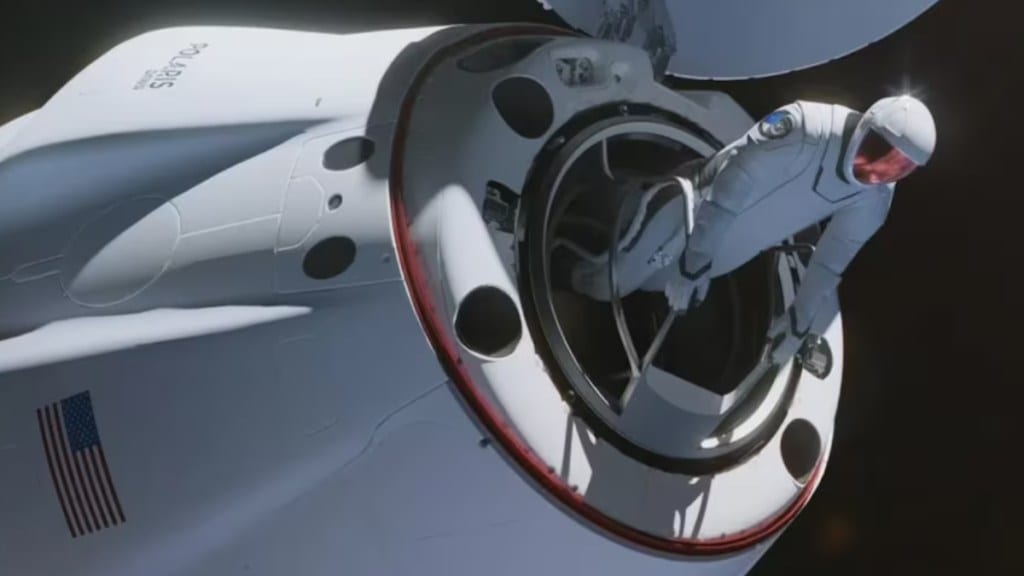A billionaire space traveler and his team returned to Earth on Sunday, concluding a five-day journey that reached higher altitudes than any previous space missions since NASA’s lunar landings. SpaceX’s capsule made a successful splashdown in the Gulf of Mexico near Florida’s Dry Tortugas in the early morning hours, carrying tech mogul Jared Isaacman, two SpaceX engineers, and a former Air Force Thunderbird pilot.
The mission achieved the first-ever private spacewalk while orbiting approximately 460 miles (740 kilometers) above Earth, surpassing the International Space Station and Hubble Space Telescope. The spacecraft reached a maximum altitude of 875 miles (1,408 kilometers) following its launch on Tuesday.
Isaacman became the 264th individual to undertake a spacewalk since the first one was conducted by the former Soviet Union in 1965. SpaceX’s Sarah Gillis was the 265th. Previously, all spacewalks had been performed by professional astronauts. “We have completed our mission,” Isaacman communicated as the capsule floated in the water, waiting for the recovery team. Within an hour, all four crew members were out of the spacecraft, celebrating with enthusiastic gestures as they stepped onto the recovery ship.
This mission marked SpaceX’s first attempt at a splashdown near the Dry Tortugas, a group of islands 70 miles (113 kilometers) west of Key West. To commemorate this new landing site, SpaceX staff brought a large green turtle balloon to the company’s Mission Control in Hawthorne, California. Due to two weeks of unfavorable weather forecasts, SpaceX chose this alternative location rather than their usual target closer to the Florida coast.
During Thursday’s commercial spacewalk, the Dragon capsule’s hatch was open for just under half an hour. Isaacman emerged to test SpaceX’s new spacesuit, with Gillis following shortly after. Gillis, who is also a trained violinist, performed a piece in orbit earlier in the week.
The spacewalk itself lasted less than two hours, much shorter than those conducted at the International Space Station. The time was primarily spent on depressurising and then re-pressurising the capsule. Even those who remained inside, Anna Menon and Scott “Kidd” Poteet, wore spacesuits.
SpaceX views this brief spacewalk as a preliminary test for spacesuit technology intended for future, longer missions to Mars.
This mission, known as Polaris Dawn, was Isaacman’s second chartered flight with SpaceX, with two more planned under his private space exploration program, Polaris. Isaacman’s first spaceflight in 2021, funded privately and including contest winners and a pediatric cancer survivor, raised over USD 250 million for St. Jude Children’s Research Hospital. The cost for the Polaris Dawn mission was shared with SpaceX, though Isaacman has not disclosed the exact amount he contributed.
(with AP inputs)

